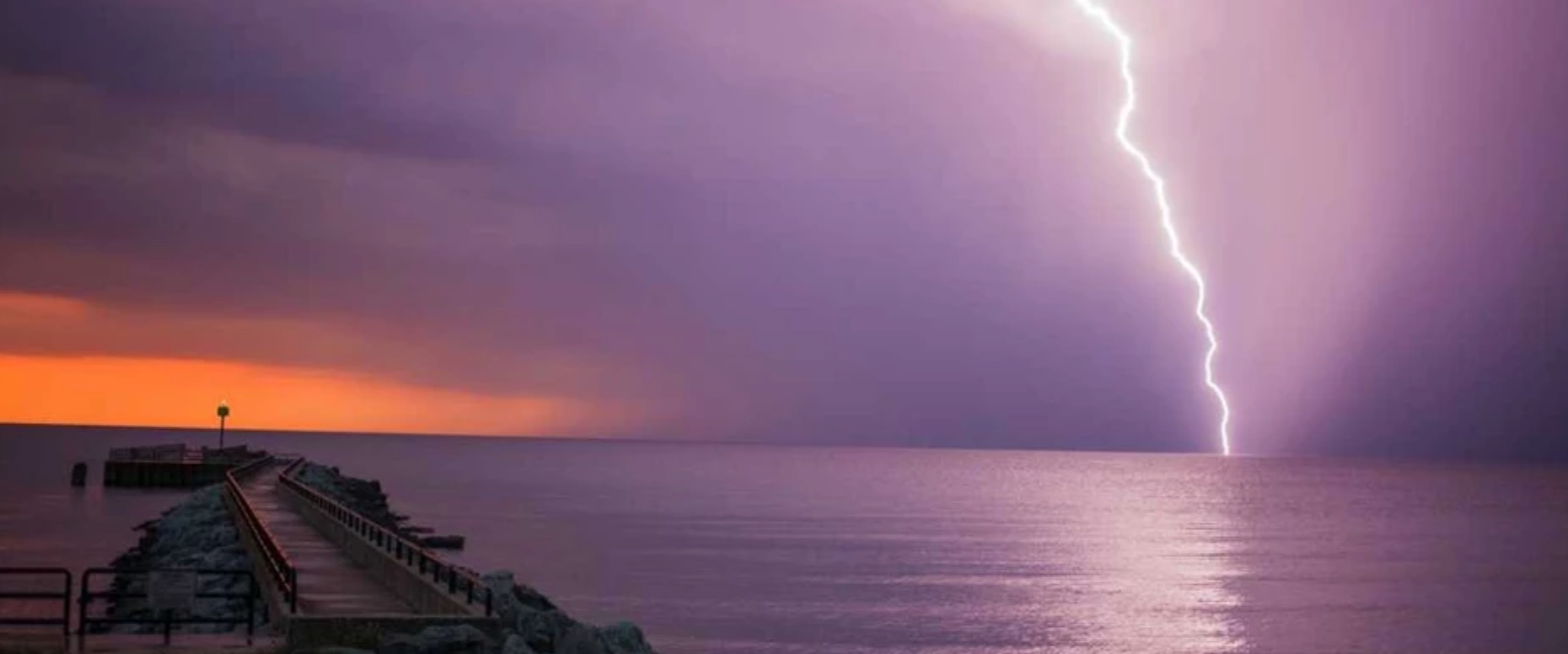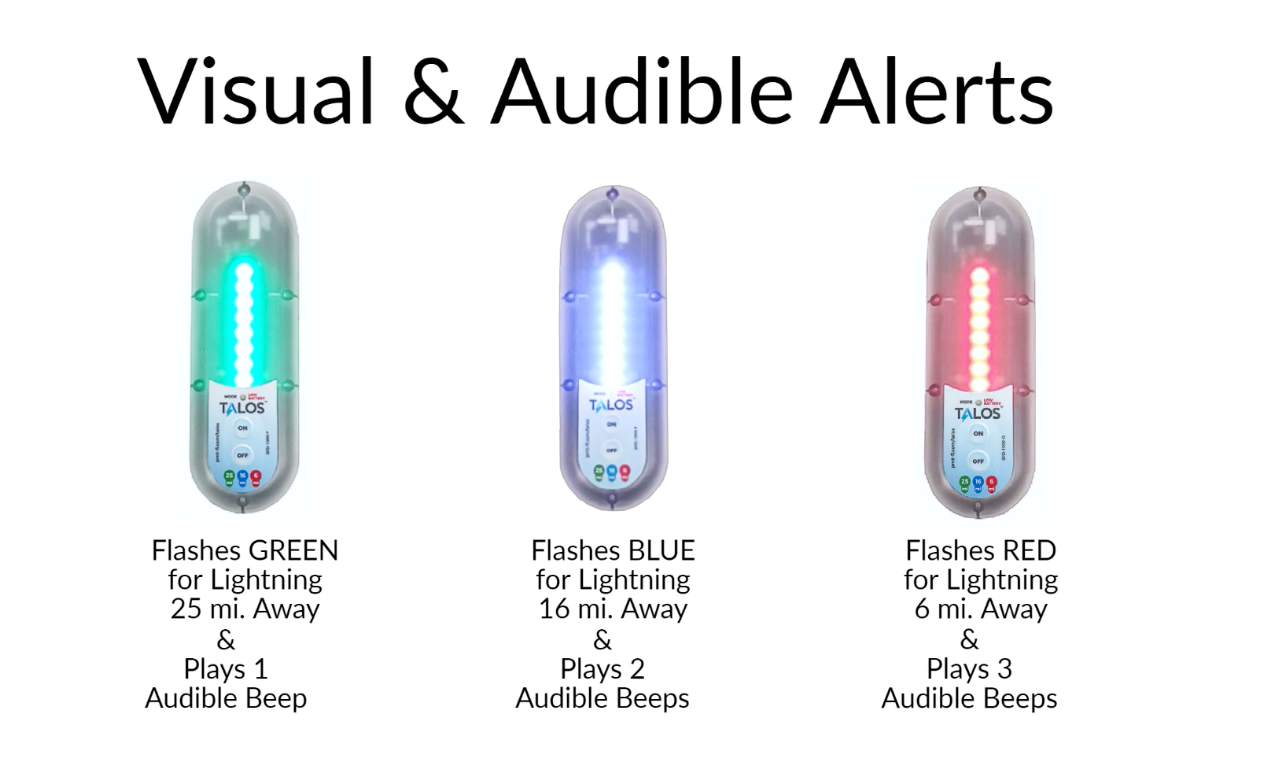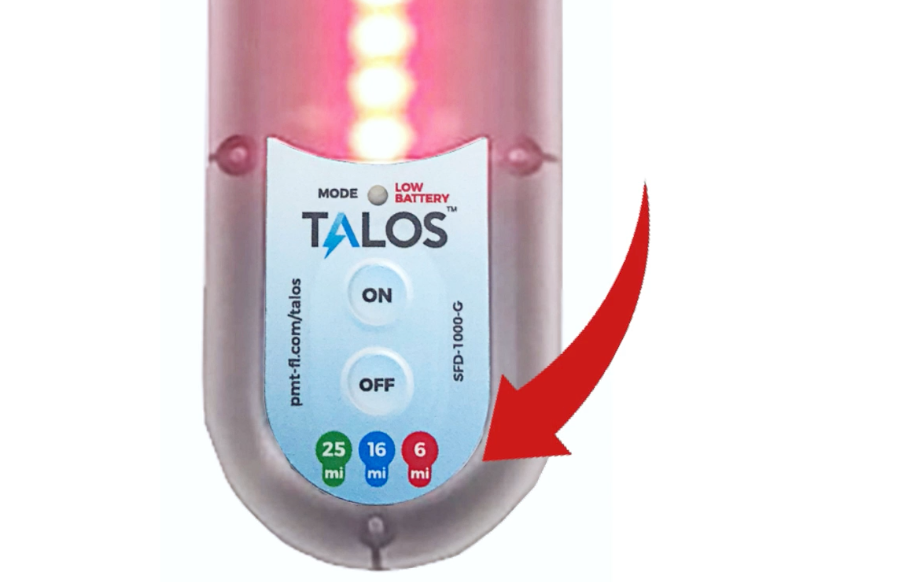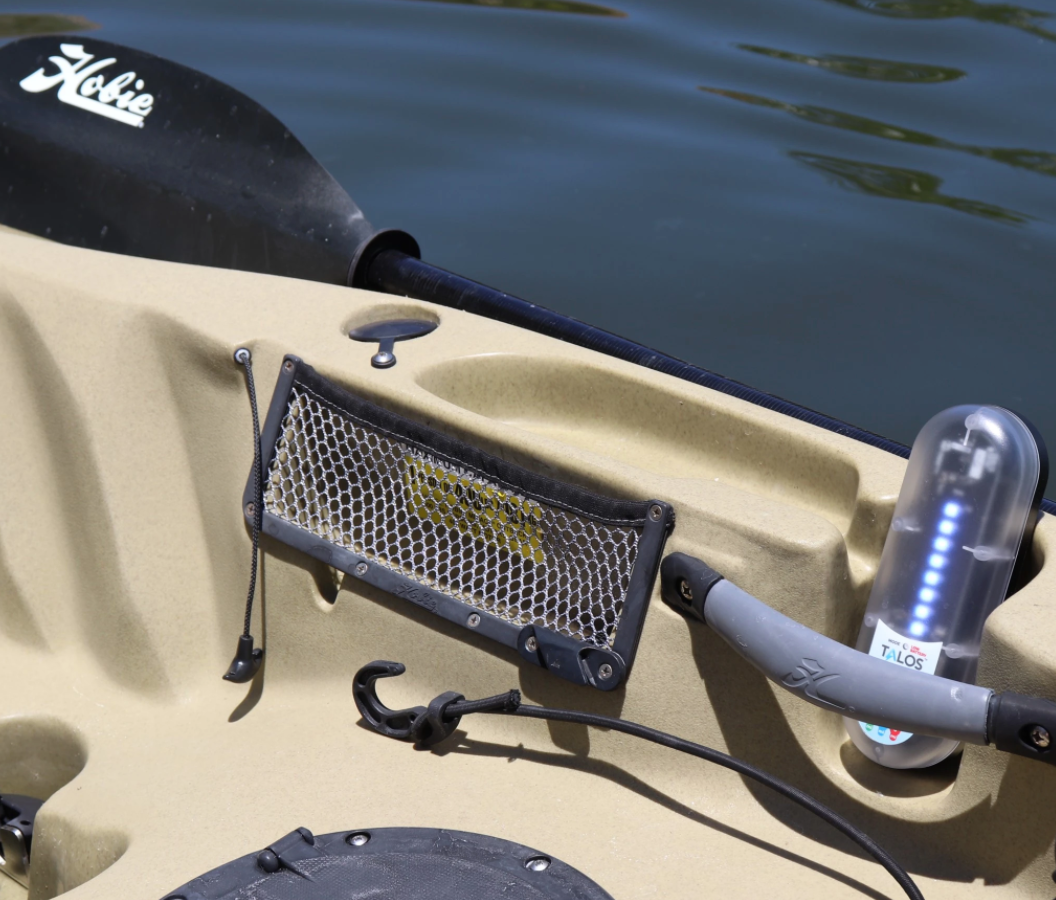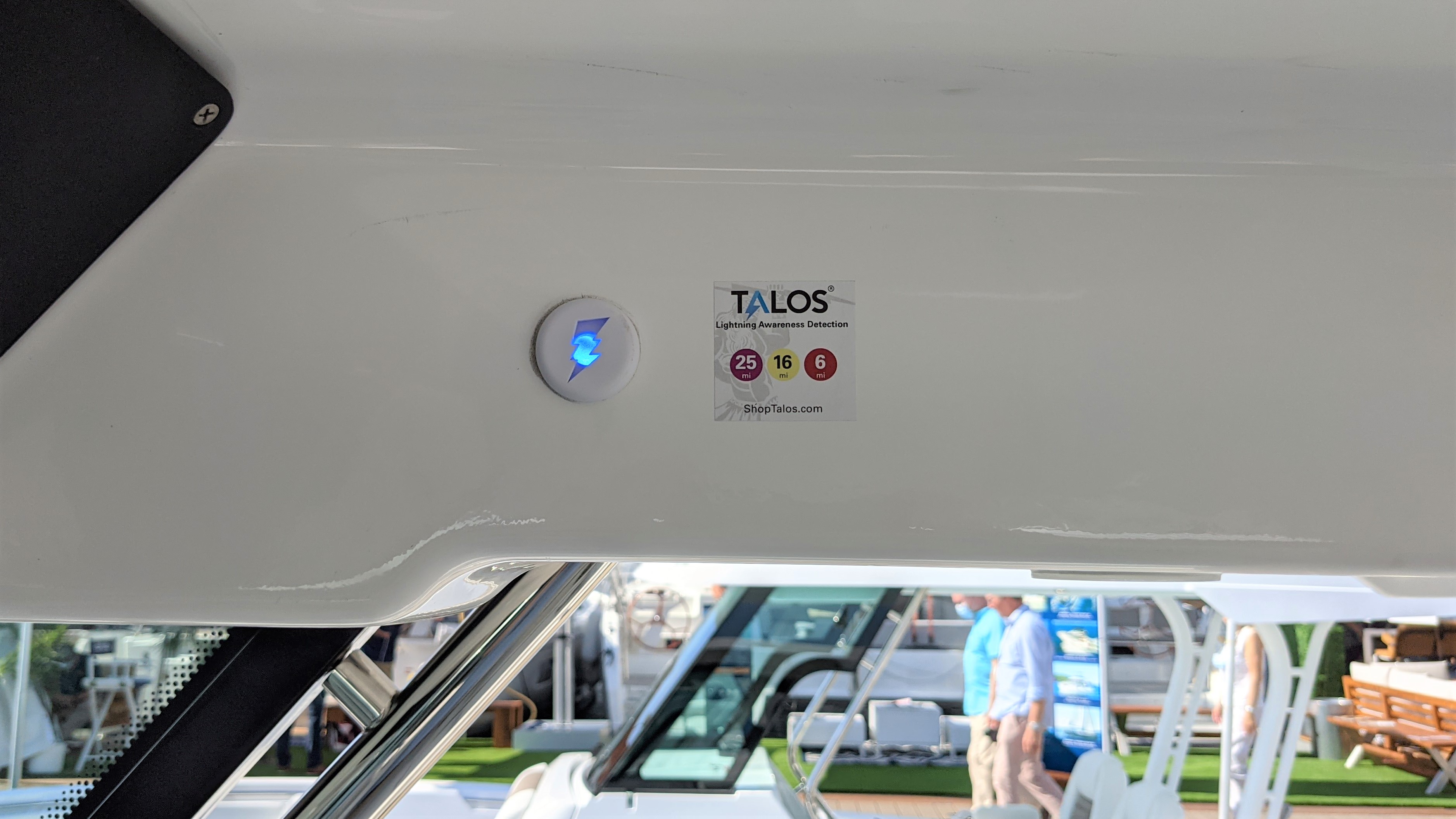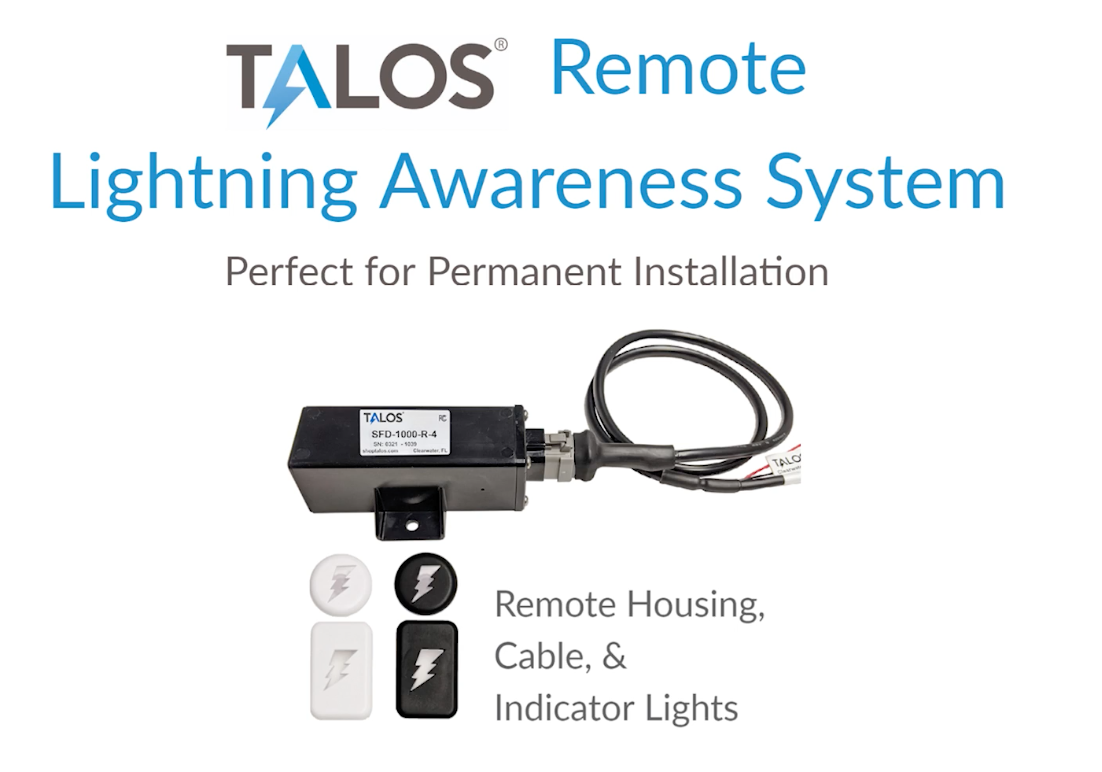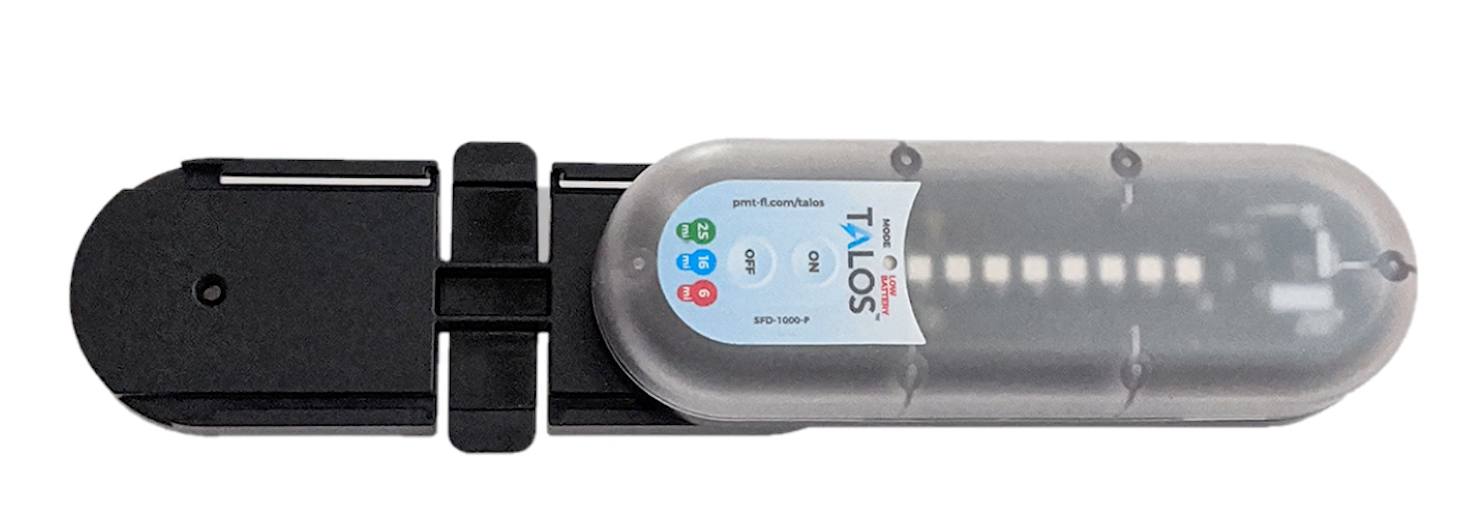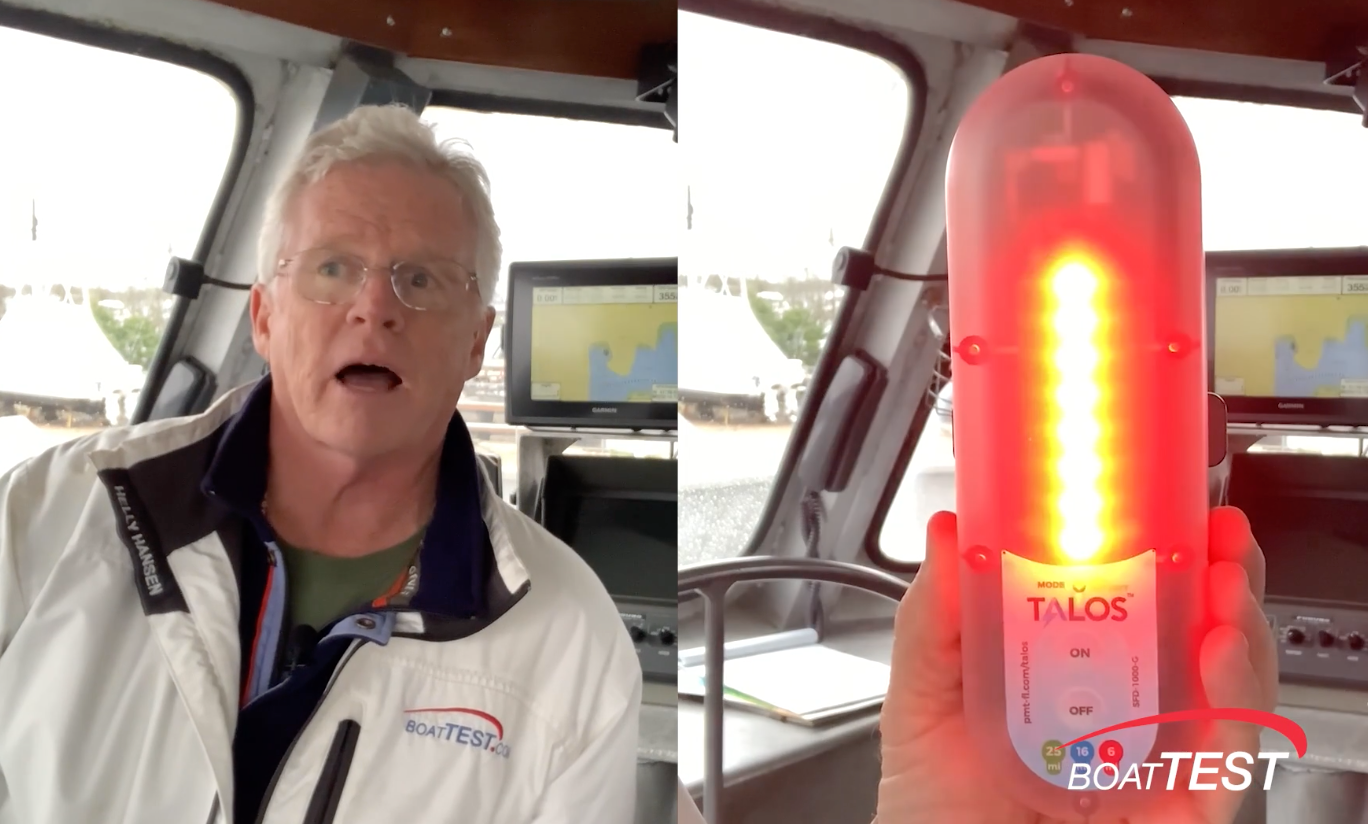Talos Lightning Strike Detector
Lightning is one of the most common threats to a boater on the water. The odds of dying from lightning while at sea are 1 in 161,856 compared to 1 in 3,748,067 for a shark attack. So is it worth investing $139 into a device that can help keep you apprised of potential lightning strikes, especially when our very own Capt. Steve positively tested it? We think so and it’s called the Talos Lightning Strike Detector SFD-1000 series.
Easy to Use
The SFD-1000 can recognize a lightning strike from up to 25 miles away. It has an algorithm that can detect false signals and the best thing is that works with color-coding, so all it takes is a glance when it starts flashing. If the unit flashes green, it has detected a strike 25 miles away. It also sounds like an audible beep. As lightning gets closer, the SFD-1000 flashes blue when it detects a strike 16 miles away and sounds two audible beeps. Red flashing and three audible beeps indicate that lightning is only 6 miles away and a boater should head for cover if he/she hasn’t already done so. There is a reminder label right on the detector.
Compact Size
At 7.5” long by 2.5” wide (19.05 cm by 6.35 cm) for the unit and 2.92” (7.41 cm) for the base and 2.17” (5.51 cm) tall, the unit is small enough that it could be mounted on a kayak or paddleboard. The Talos Lightning Strike Detector provides situational awareness of lightning and works in real-time. No cellular signal is required and there are no subscription fees. It’s IP-65 waterproof and is available as a hard-wired unit or with four AA batteries. Lithium is recommended and Talos says the average battery life is one year.
The SFD-1000 should be installed with the lens facing skyward for best results and it should be placed where the temperature does not exceed the specified limits for a boat’s battery. It should be installed a minimum of 3’ (0.91 m) from cellphones, wearables and other equipment that emits electrical noise. If the SFD-1000 can’t detect lightning due to electrical noise, it will display a sequence of all three colors on the top 3 LEDs. It needs to be relocated.
When the unit is first powered up, it’s in Normal mode and actively listens for lightning/storm activity. Press the On button a second time and it goes into auto-sleep mode. The detector sleeps until activity is detected. Then it turns on. If no weather is detected for 30 minutes, it goes back to sleep.
Three Versions
There are three versions of the SFD-1000. The base unit is for permanent installation in a single location and costs $139 retail. The SFD-1000 RS looks like a rocker switch and fits into the standard spot for one in a switch panel. Install the SFD-1000 remotely and the switch replacement flashes the color when a strike is detected. The SFD-1000 R is round and operates identically to the RS with a small puck-like indicator that mounts to a boat’s dash or wherever an owner wants. Extra indicators are also available for installation at multiple helm stations. Boatbuilders including Bass Cat and Bertram are installing the Talos products on new models.
Real-World Test
Capt. Steve, BoatTEST’s director of testing and resident tech-head, evaluates the SFD-1000 using SiriusXM weather and a popular weather app for aviation as backup. With a storm approaching, the SFD-1000 indeed began flashing green with the first lightning strike 25 miles away. A little while later, the flashing changed to blue with the audible beeps indicating the approaching front was 16 miles away. If we had been out on the water, it would have been time to head to shore. As a storm closes in, it often picks up speed and it wasn’t long before we heard three beeps and the SFD-1000 flashed red.
Observations
Thunder can only be heard from 10 miles away, but lighting can actually strike when a storm is as far away as 25 miles. That’s why the Talos Lightning Strike Detector is worthwhile, especially for the cost of $139. Lightning ranks second as a cause of weather-related injuries and fatalities. The SFD-1000 was nominated for an Innovation Award at the 2021 Storm Expo.
There are numerous benefits to the SFD-1000 for boaters, especially fishermen and long-range cruisers. It works in the background and stays on. It needs no attention to keep a user apprised with real-time data. Comparatively, an app or a chartplotter needs to be changed to the proper mode to provide the information. For the cost of a dinner date at a good restaurant, a boatowner can enhance his/her family’s safety.
